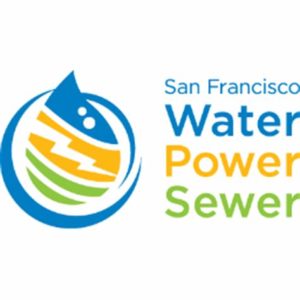
Tell us about yourself: Amy Nagengast, San Francisco, CA, Ph.D. in Civil and Environmental Engineering, P.E., LEED AP
I found my enthusiasm for engineering while getting my B.S. in Civil Engineering from UW-Madison. After working for a couple years as an engineer in the water and wastewater industry, I decided to focus on the interdisciplinary area of sustainable design while getting my Ph.D. from Carnegie Mellon University.
Currently, my engineering career revolves around the intersection between buildings, energy, and people. I strive to make buildings a healthy environment for people to live and work in while minimizing energy, water, and waste.

Amy Nagengast
How did you engage: I applied to a local citizens’ advisory committee (CAC).
I always thought that my engineering background and analytical mind, combined with my passion for infrastructure and buildings, might be a good fit for a local utility board at some point. After a short internet search, I found the San Francisco Public Utilities Commission Citizens’ Advisory Committee (CAC). The committee consists of 17 individuals, appointed by various San Francisco elected officials, who provide recommendations on important topics of power, water, and sewer. After researching the CAC, I applied to the position for the district where I live, and I was appointed by my District Supervisor.
What were the steps: I submitted an application and had an interview.
 Before deciding to apply, I went to a couple CAC meetings to learn about the committee. I left the first meeting engaged in the topic areas and enthusiastic to apply. The application was a two-page short-answer questionnaire that asked about my professional experience and civic involvement. The last step was an interview with my District Supervisor where I felt nervous, having rarely spoken to or met a city official. Should I try to convey my technical knowledge on water, power, and sewer topics as an professional engineer? Should I ask questions to see if his infrastructure agenda matches my beliefs since I would be his appointee? Should I aim to connect with him on a non-political level? While the meeting was short, we hit on all of these questions so I was glad I thought through them in advance. A few days after the interview, I got an email saying I got the position!
Before deciding to apply, I went to a couple CAC meetings to learn about the committee. I left the first meeting engaged in the topic areas and enthusiastic to apply. The application was a two-page short-answer questionnaire that asked about my professional experience and civic involvement. The last step was an interview with my District Supervisor where I felt nervous, having rarely spoken to or met a city official. Should I try to convey my technical knowledge on water, power, and sewer topics as an professional engineer? Should I ask questions to see if his infrastructure agenda matches my beliefs since I would be his appointee? Should I aim to connect with him on a non-political level? While the meeting was short, we hit on all of these questions so I was glad I thought through them in advance. A few days after the interview, I got an email saying I got the position!
What did you get out of this experience: Serving on the CAC has been intellectually rewarding and given me a new appreciation for my community.
A snapshot of topics addressed by the Citizen's Advisory Committee includes the 20 year Sewer System Improvement Plan, electric service rates, public art, workforce development and the ever-growing Adopt-a-Drain program. The latter is a program that allows residents to prevent flooding by keeping debris clear of street storm drains and giving the drains fun names such as “Midnight Drain to Georgia” and “Brain Drain”. Being on the CAC has been fulfilling, from the diversity of topics discussed at meetings to the opportunities to positively impact my community.